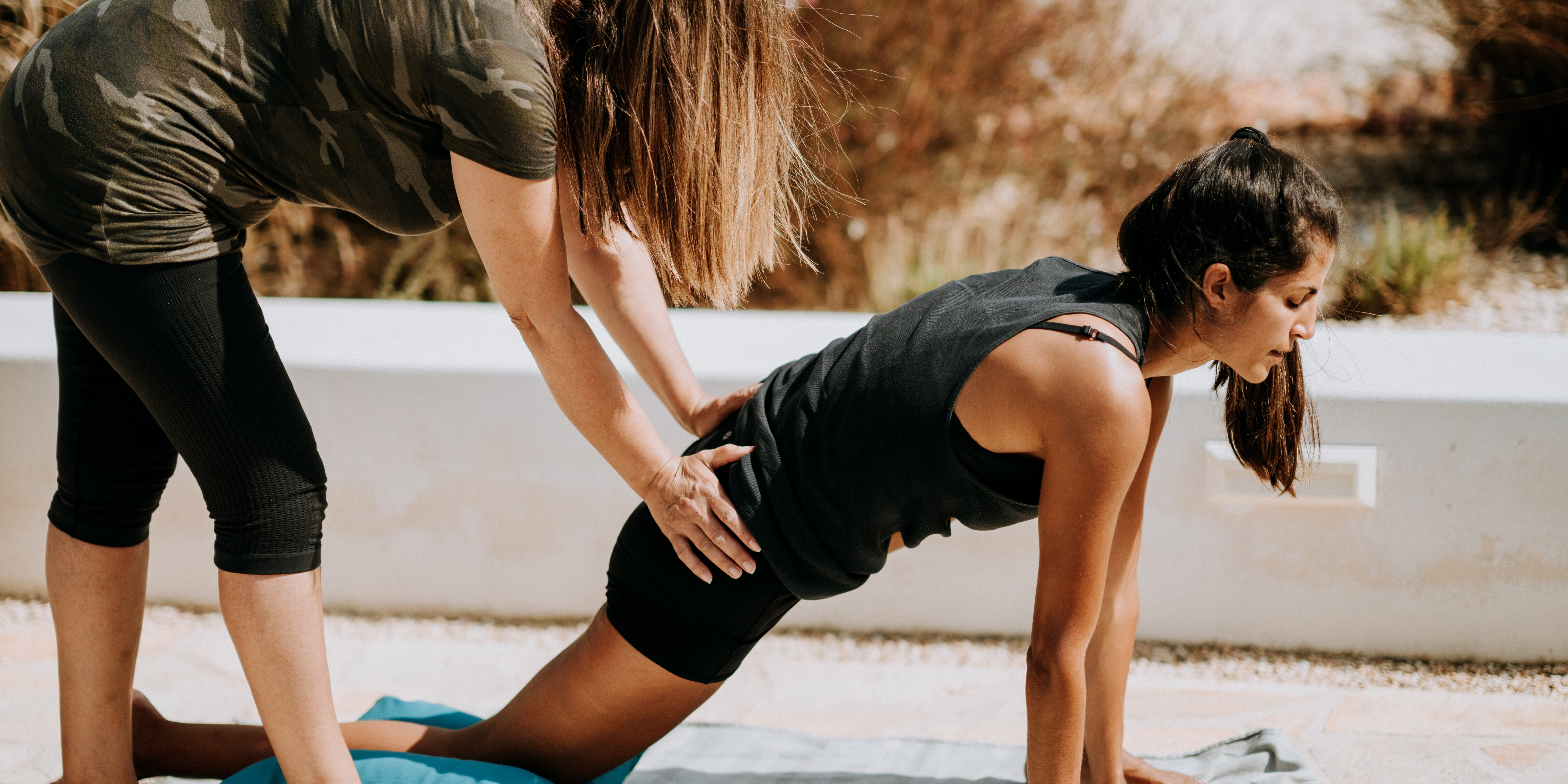Did you know that the shoulder is one of the most unstable joints in the body?
Although the shoulder is one of the most mobile joints in our bodies, giving us a wide range of motion to allow us to accomplish necessary tasks of daily living, maintaining adequate stability and mobility is key to preventing injury.
The good news is that whether you’ve been previously injured or are looking to improve your shoulder joint strength or mobility to avoid injury altogether, there are several exercises that can help you achieve greater comfort through a full range of motion in the weeks, months, and years to come.
Follow along to find out which 3 shoulder mobility exercises we recommend to help you address muscle imbalance, treat pain, and restore function.
Anatomy of the Shoulder
The shoulder is a functional yet incredibly complicated joint made up of several important structures that contribute to its strength and flexibility.
The shoulder joint is formed where the humerus (bone of the upper arm) meets the scapula (shoulder blades), fitting together like a ball and socket. Other important bones involved include the acromion and coracoid bones (both attached to the scapula), along with the clavicle (collarbone).
Essential soft tissue structures that keep the shoulder joint intact include the rotator cuff which combines the following:
- a selection of muscles and tendons
- a bursa which is a small fluid-filled sac to cushion the tendons in the shoulder
- multiple ligaments
- cartilage (also known as the labrum) that forms the “socket” for the head of the humerus to fit inside
When any of the complex structures that make up the shoulder joint become stretched, torn, or detached, you become more vulnerable to injury.
The Most Common Shoulder Injuries
Research has found that shoulder pain affects 18-26% of adults making it one of the most common regional pain syndromes. Living with chronic pain or joint stiffness can make it challenging to carry out activities of daily living such as eating, bathing, driving, and dressing.
Among the many types of a shoulder injuries, studies have recognized the following to be the 4 most common:
1. Rotator cuff disorders
Rotator cuff disorders are proven to be the most common cause of shoulder pain in young to middle-aged adults. This type of tear may be the result of repetitive overhead activity, prolonged bouts of strenuous lifting causing tendon irritation or damage, or the shear stress from a single incident during a fall or accident (i.e. car accident injury).
2. Glenohumeral disorders
Glenohumeral disorders such as frozen shoulder and glenohumeral arthritis are two common joint issues that contribute to pain and immobility. Frozen shoulder, also known as adhesive capsulitis, is characterized by stiffness throughout the joint that may gradually worsen over time if not resolved through rehab treatment.
3. Acromioclavicular joint disease
Acromioclavicular joint injury or disease is generally secondary to trauma or osteoarthritis. This type of injury can cause pain, tenderness, and swelling inside the joint which restricts the range of motion and can lead to further complications such as shoulder impingement.
4. Referred neck pain
Referred pain describes a type of pain that’s perceived at a location other than the site of injury. In this case, referred neck pain describes the pain or discomfort in the lower neck region that causes referred pain in the shoulder joint. This type of injury contributes to stiffness and immobility through the shoulder capsule and upper back region.
Other common injuries that cause shoulder pain include:
- Shoulder dislocation (an injury where the humeral head loses contact with the socket causing a dislocation of the joint)
- Shoulder separation (an injury to the ligament between the shoulder blade and collarbone)
- Fractures (i.e. humeral head, scapular, clavicle, etc.)
- Cartilage tear
- Shoulder impingement
- Bursitis
What is causing my shoulder stiffness?
Depending on your lifestyle, you may be experiencing tightness throughout the shoulders and nearby muscles including your neck and upper back for various reasons.
Those who live an active lifestyle, have physically demanding jobs, or play recreational or competitive sports may experience pain or tightness from stress, tension, or overuse of their shoulders. On the other hand, shoulder tightness can also be caused by a lack of use in those who sit for extended periods of time, sleep in uncomfortable positions, or have poor posture.
No matter the cause of your stiff or weak shoulders, mobility exercises will be your best friend!
Top 3 Mobility Exercises for Weak or Immobile Shoulders
Whether you’re experiencing muscle tightness, soreness, or weakness in the shoulder joint, these 3 exercises use different movement patterns to help you build strength and stability throughout the shoulder while improving your functional range of motion.
Movement #1: Wall Slides
The first progressive shoulder rehab exercise is known as the wall slide. Used to increase a controlled range of motion throughout your shoulder complex, wall slides are an excellent starting point to check for any discrepancies in your movement patterns. Plus, it doubles as a great shoulder stretch!
Here’s how to do it:
- Stand facing a wall (your nose should be almost touching the wall)
- Press a piece of paper onto the wall with one hand next to your body and with your elbow by your side (your palm should be flat against the paper)
- Without letting the paper drop, slide it from the starting position up towards the sky, then back to the starting position, and again in an upward diagonal position, etc.
- Continue this movement as you create the outline of a “star shape” on one side of your body
- Repeat the exercise on the other side
Movement #2: Banded Rotations
After working on your range of motion through the shoulder with the wall slide exercise, the next step is to enhance stability. Banded rotations encourage you to accomplish external and internal rotational movement against constant resistance.
Here’s how to do it:
- Standing with your feet shoulder-width apart, hold a band up over your head with your elbows slightly bent
- Extend the band outward by squeezing your shoulder blades together until you feel slight tension in the resistance band
- Rotate the band down below eye level as you rotate your shoulders in a downward direction (forearms parallel to the ground)
- Rotate the band back to the starting position as you rotate your shoulders back
Movement #3: Kettle Bell Carries
It’s time to challenge our shoulder joint with a bit of tension. Kettlebell carries are a functional exercise that helps build shoulder, thoracic, and wrist strength and stability.
What makes this exercise so unique is the use of uneven weight distribution. In preparation for real-world situations such as carrying off-balanced loads of groceries or reaching for heavy objects with one arm, kettlebell carries force us to stabilize our shoulders, core, and legs to help maintain balance throughout the movement.
Here’s how to do it:
- Raise a kettlebell up beside your head with your shoulder and elbow bent at a 90-degree angle
- Walk 10-15 steps in one direction, turn and walk back to your starting point
- Repeat the exercise on the other side
Check out our Instagram page to find all the shoulder rehab exercises live in action!
Physical Therapy for Shoulder Pain
If you’re struggling to rehab your shoulder on your own, it may be necessary to reach out to a trained professional to help get you back on track to recovery.
At Wildewood Health, our team of Kinesiologists and Athletic Therapists are here to help you recover from injury, address tight shoulders, and help monitor the muscles and joints surrounding this area.
Active rehab specialists will work one-on-one with you to:
- Create individualized programs to target pain, weakness, and injury
- Address and resolve specific sources of shoulder pain using guided manual therapy techniques
- Monitor and manage symptoms throughout sessions to prevent long-term damage to the joint
- Restore function, mobility, strength, and stability of your shoulders and related structures
The Bottom Line
Exercising the shoulder is essential to preventing injury, minimizing joint stiffness, and addressing muscle imbalances. A quality shoulder rehab routine should include exercises that increase mobility (i.e. wall slides), increase stability (i.e. banded rotations), and challenge the surrounding muscles and tissues to support the movement (i.e. kettlebell carries). If your shoulder pain or discomfort is affecting your daily activities, book an appointment with us today. We look forward to working with you!





